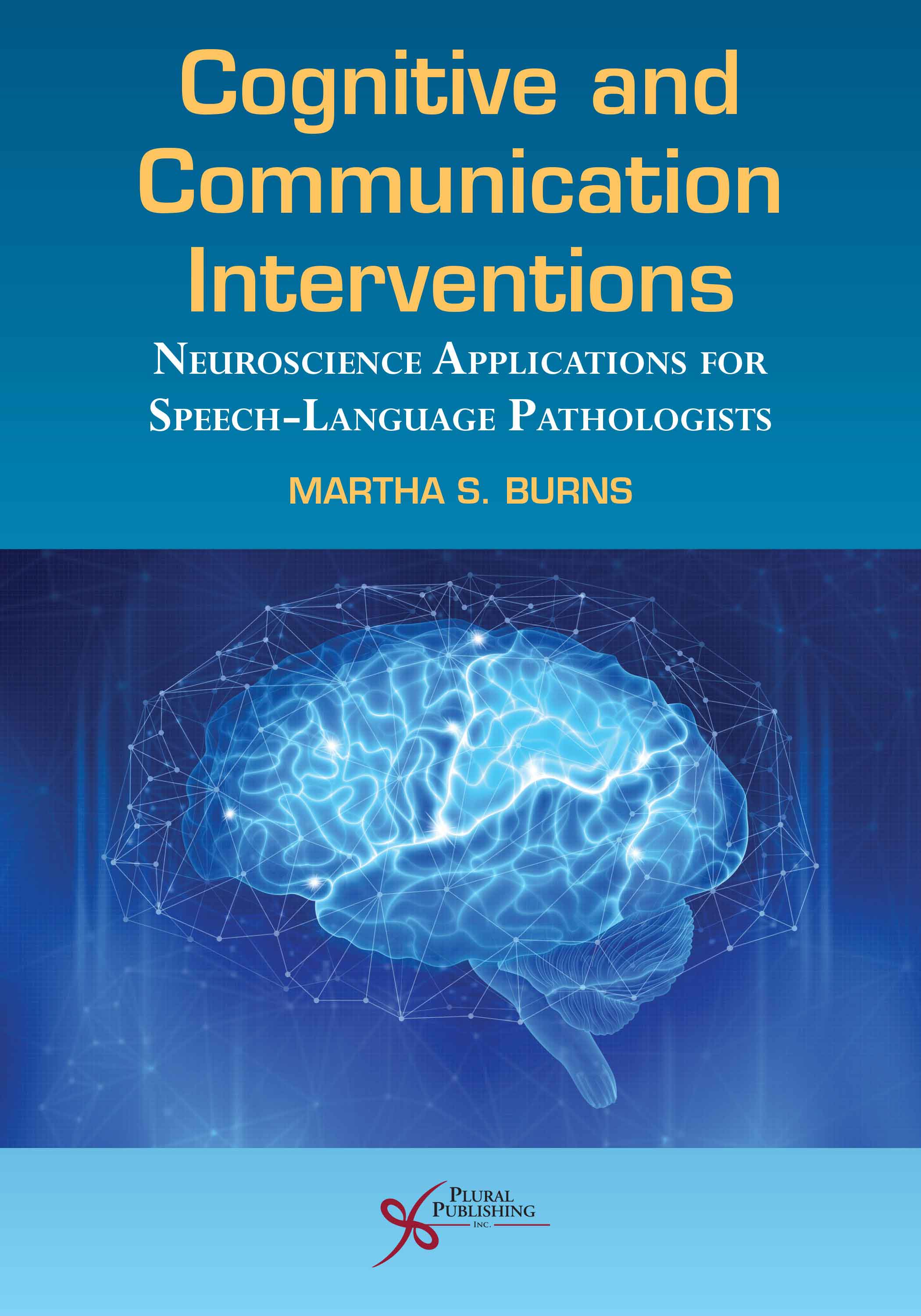
Cognitive and Communication Interventions: Neuroscience Applications for Speech-Language Pathologists
First Edition
Martha S. Burns
Details: 318 pages, B&W, Softcover, 7" x 10"
ISBN13: 978-1-63550-292-3
© 2021 | Available
For Instructors
Purchase
Understanding the recent science about how therapy changes the brain can empower clinicians to face the challenges of increasingly demanding medical and educational settings. However, many speech-language pathologists (SLPs) are unaware of the vast impact new neuroscience research has on clinical practice. Cognitive and Communication Interventions: Neuroscience Applications for Speech-Language Pathologists is a practical guide that informs and enables SLP’s, clinical psychologists, and other therapeutic professionals to use new research to enhance their clinical outcomes.
Although based on independent neuroscience principles and research, this unique book is designed to be a readable and scientifically sound clinical guidebook. Written with the busy clinician in mind, this professional resource uses accessible, easy-to-understand language to walk readers through the complexities of neuroscience and provide workable strategies for application.
The beginning chapters break down important concepts, such as neuroplasticity, environmental stressors, and connectomics, to create a base of understanding. The middle chapters delve into recent investigations of factors that potentially affect typical brain development, as well as disrupt connectomics. The final chapters provide neuroscience considerations for intervention, including the “What, How, and When” of therapy and other important considerations for individualizing and maximizing outcomes.
Throughout the book, clinicians will also find case studies that provide examples of the practical applications of neuroscience research and study questions to improve memory and inference.
Martha Burns Discusses Cognitive and Communication Interventions
Reviews
“This is a much-needed textbook providing comprehensive neurodevelopmental concepts…It is written in an easy-to-understand comprehensive format for graduate students, new, and even experienced Speech-Language Pathologists.”
— Kathryn Atkinson, MA, Master Clinical Educator in Speech-Language Pathology, Central Michigan University
“This text is needed greater in our field. As we continue to expand our knowledge in neuroscience, it is crucial that we implement that into our clinical practice. Dr. Burns shows why evidence-based practice is imperative for cognitive and communication interventions. Information can be applied in many ways to help not only students but professionals as well. I cannot wait for this book in final form!”
— Kerri Phillips, SLPD, Professor and Program Director for Speech-Language Pathology, Louisiana Tech University
“This is an excellent, advanced-level text on the application of neuroscience concepts to the assessment and treatment of disorders of cognition and communication. The text serves as an excellent summary of past research findings and present developments in brain science.”
— Kelly Salmon, SLPD, Assistant Professor, Department of Speech Pathology, Salus University
“This is a seminal text – a game changing book...The author writes with an elegance of clarity that belies the sheer depth and complexity of content...no other text bridges the unnecessary divide which persists between the educational and medical realms of our professions. Marty traverses the landscapes of the brain and brings it to life, transforming potentially overwhelming complexity into applicable tenets and principles for the What, How, and When of doing therapy to cause neural and functional changes.”
— Jill K. Fahy, MA, Associate Professor, Department of Communication Disorders and Sciences, Eastern Illinois University
“Before reading this text, I knew the principles of neuroplasticity and use them regularly in practice. I only had a vague understanding of the neuroscience behind them. I now have a more detailed foundational and conceptual understanding of the neuroscience principles; this allows me to apply my knowledge more effectively and with more conviction.”
— Maggie Mathieson, MS, Spalding Rehabilitation Hospital, Aurora, Colorado
“The strength of this text is the integration of a great deal of neuroscience research into clinical extensions/applications for SLPs/AuDs. There is so much depth but it is presented in a manner that is relatively easy to understand, given some prior knowledge of the topics”
— Jerry K. Hoepner, PhD, Associate Professor, Communication Sciences + Disorders, University of Wisconsin-Eau Claire
“Based on the historical perspectives and updates on localization and connectionism, the book truly captures the spirit of neurolinguistic and neuropsychological explanations for various disorders, while providing a solid background on neuroscience-driven therapy approaches for clients with neurogenic disorders.”
— Jayanti Ray, PhD, Professor, Communication Disorders, Southeast Missouri State University
“Although the audience for this book is Speech-Language Pathologists, it would also be a great resource for other related fields such as neurolinguistics, psycholingustics, and neurology.”
— Vijayachandra Ramachandra, PhD, Associate Professor, Department of Communication Sciences and Disorders, Marywood University
"The purpose of the book is to introduce the readers to current neuroscience research in order to enhance evidence-based clinical practice. Given the current evidence-based emphasis in speech-language pathology and related fields, this is a needed book to train clinicians on how to follow the neuroscience evidence trail to help their clients.
The book is written by Martha Burns, a well-known speech-language pathologist and faculty member at Northwestern University. It is written mainly for graduate-level speech-language pathology students and practicing professionals in speech-language pathology, but would also be useful to those practicing neuropsychology.
Each of the nine chapters of the book is written in an outline style that makes both the organization and writing of the text clear. The content focuses on current advances in neuroscience and their application to both pediatric and adult speech-language pathology. A particularly helpful chapter is chapter 9, which discusses how therapy changes the brain (i.e., neuroplasticity). In addition to the outline approach, each chapter has case studies, figures, and tables that illustrate the text well."
— Matthew H. Rouse, MS, SLPD, CCC-SLP, Biola University, in Doody's Reviews (April 2021)
Preface
Introduction and Test Organization
Reviewers
Acknowledgements
Chapter 1. Neuroscience Overview and Update
A. Introductory Neurodevelopmental and Acquired Neurocognitive Case Studies
B. How We Got Here—The Historical Perspective
a. Introduction
b. Early Studies of Brain and Language
c. Brain Science Localization Merges With Connectionism
d. The Technology Era Broadens the Scientific Landscape
e. Network Theory Advances Through Enhanced Imaging Techniques
f. Summary
C. Network Neuroscience—An Introduction
a. Size, scope and clinical relevance
b. Network Organization
c. Summary and Proposed Clinical Applications
Chapter 2. Oral, Gestural, and Written Language Networks
A. Overview of Neuroanatomical Structure: The Triune Brain
a. Lower Triune Brain Levels: Automatic Biological Functions and the “Emotional Brain”
b. The Highest Triune Brain Level: The Neocortex
c. Clinical Applications of the Triune Brain Model
B. Network Neuroscience of Language and Communication
a. Top-Down/Bottom-up Language Network Components
b. Ventral and Dorsal Stream
c. Phonology
d. Syntax
e. Semantics
f. Prosody
g. Gestural Communication
h. Pragmatics
i. Written Language
j. Summary
Chapter 3. Cognitive Neuroscience and Connectomics Applications to Neurological Disorders
A. Network Neuroscience of Cognitive Functions
a. Overview of Cognitive Functions
b. Network Neuroscience of Memory
c. Network Neuroscience of Executive Functions
B. Human Connectomics: Tying Architecture and Biological Mechanisms to Brain Disorders
a. Connectomics—Detailed Wiring Diagrams of Brain and Biological Mechanisms
b. Connectomic Features Relevant to Neurological Disorders: Hubs, Edges, Directionality, Weight, and Network Segregation/Integration
c. Chemistry: Brain Modulation
C. Summary
Chapter 4. How the Human Brain Changes: Neurogenetics, Neuroplasticity in Maturation, Recovery, and Environment
A. Introduction
B. Neurogenetics
a. Introduction
b. RNA and DNA Basics
c. Genetic Variation and Human Brain Differences
d. Epigenetics
e. Genetic Variations and Disorders of Speech, Language, and Cognition
f. Summary
C. Neuromaturation and Neuroplasticity
A. Fetal Brain Development
b. Neonatal Brain Development—Birth to 5 Years—Brain Volume Measures
c. Neonatal Brain Development—Birth to 5 Years—White Matter Measures
d. The Adolescent Brain—A Second Sensitive Period
e. Variability in Development
f. Personalized Medicine Adaptations
D. Neuroplasticity
E. Interactional Synchrony: Brain-to-Brain Functions
Chapter 5. Environmental Factors in Brain Maturation of Language and Cognitive Functions
A. Introduction
B. Socioeconomic Status (SES)
a. Introduction
b. Socioeconomic Status Effects on Brain Maturation: Structure and Functionn
c. Socioeconomic Status Effects Associated With Malnutrition
d. Interaction of Socioeconomic Status and Genetics
e. Socioeconomic Status Effects on Language, Working Memory, and Processing Speed
f. Socioeconomic Status Differences in Parent Language and Other Parent-Child Interactions
g. Other Executive Functions: Attention and Self-Regulation
h. Individual Differences
i. Socioeconomic Status Reading
j. Socioeconomic Status and Academic Outcomes
C. Stress
a. Introduction
b. From Positive to Adverse Effects of Stress
c. Educational Implications
d. Effects on Cognitive Development
D. Adverse Childhood Experiences and Toxic Substance Exposure
a. Adverse Childhood Experiences
b. Toxic Substance Exposures
c. Summary
E. Summary and Clinical/Educational Applications
Chapter 6. Connectomics and Genetics of Neurodevelopmental Cognitive and Communication Disorders
A. Introduction
B. Autism Spectrum Disorders
a. Introduction
b. Genetics
c. Underlying Brain Mechanisms
d. Environmental Factors
C. Developmental Language Disorders
a. Introduction
b. Phonological Deficit Hypothesis
c. Cognitive Systems: Learning and Memory
d. Statistical Learning
D. Developmental Dyslexia
a. Introduction
b. Genetics
c. Underlying Brain Mechanisms
d. Perceptual and Cognitive Factors
e. Environmental Factors
E. Childhood Apraxia of Speech (Developmental Dyspraxia Affecting Speech)
Chapter 7. Connectomics and Genetics of Acquired Cognitive and Communication Disorders
A. Introduction
B. Concussion and Traumatic Brain Injury— Mechanisms and Clinical Features
a. Introduction
b. Brain Mechanisms and Related Symptomatology
C. Aphasia—Status of Neuroscience Research
a. Introduction
b. Brain Mechanisms and Related Symptomatology
D. Right Hemisphere Disorder—Status of Neuroscience Research
a. Introduction
b. Brain Mechanisms and Related Symptomatology
E. Progressive Neurological Diseases (Alzheimer’s Disease, Lewy Body Dementia, Other Dementias)
a. Introduction
b. Lewy Body Dementias
c. Alzheimer’s Dementia, MCI, and PART
d. Other Dementias
e. Summary
Chapter 8. How Therapy Changes Brains
A. Introduction and Overview of Effects of Intervention
B. The “What” of Therapy—How to Select Effective Task-Specific Activities
a. Introduction
b. Evidence-Based Practice in Neurodevelopmental Disorders – State of the Science
c. Evidence-Based Practice in Acquired Neurological Disorders – State of the Science
C. The “How” of Therapy
a. Introduction
b. How Therapy Upregulates Excitatory Neuromodulators Associated With Neuroplasticity: Dopamine, Norepinephrine, and Acetylcholine
c. Regulatory Neuromodulator of Serotonin
d. Balancing Top-Down Executive/Regulatory Intervention With Task-Specific Activities
e. Summary
D. The “When” of Therapy
a. Issues Related to Neuroplastic Periods: Early “Sensitive Period”—Birth to Five Years and the Later Sensitive Period, The Adolescent Brain
b. Issues Related to Recovery Periods Following Brain Injury
c. Intensity of Therapy—Recent Research
d. Summary
Chapter 9. Other Considerations: Maximizing Therapeutic Outcomes
A. Individualizing Therapy to the Unique Needs of Each Client or Patient
B. Maximizing Therapeutic Commitment: Promoting a Safe, Trusting Therapeutic Alliance
C. Teacher, Parent, Family, and Interprofessional Collaboration
a. Teacher Collaboration
b. Parent Collaboration
c. Family Collaboration With Acquired Neurocognitive Disorders
d. Summary
D. Behavioral Academic and Vocational Adaptations: Building Goal-Directed Behavior in Adolescents and Adults
E. Technological Adjunctive Approaches That Are Evidence Based to Increase Therapeutic Dosage
F. Summary
Appendix I. A Brief Overview of Traditional English Syntax Terminology
Appendix II. ICD-11 Language Disorders
Appendix III. Dementia Codes from the International Classification of Diseases, 11th Revision
Appendix IV. Recent Clinical Resources for Task Selection With Strong Evidence Base
Appendix V. Evidence-Based Technological Cognitive and Communication Interventions
References
Index
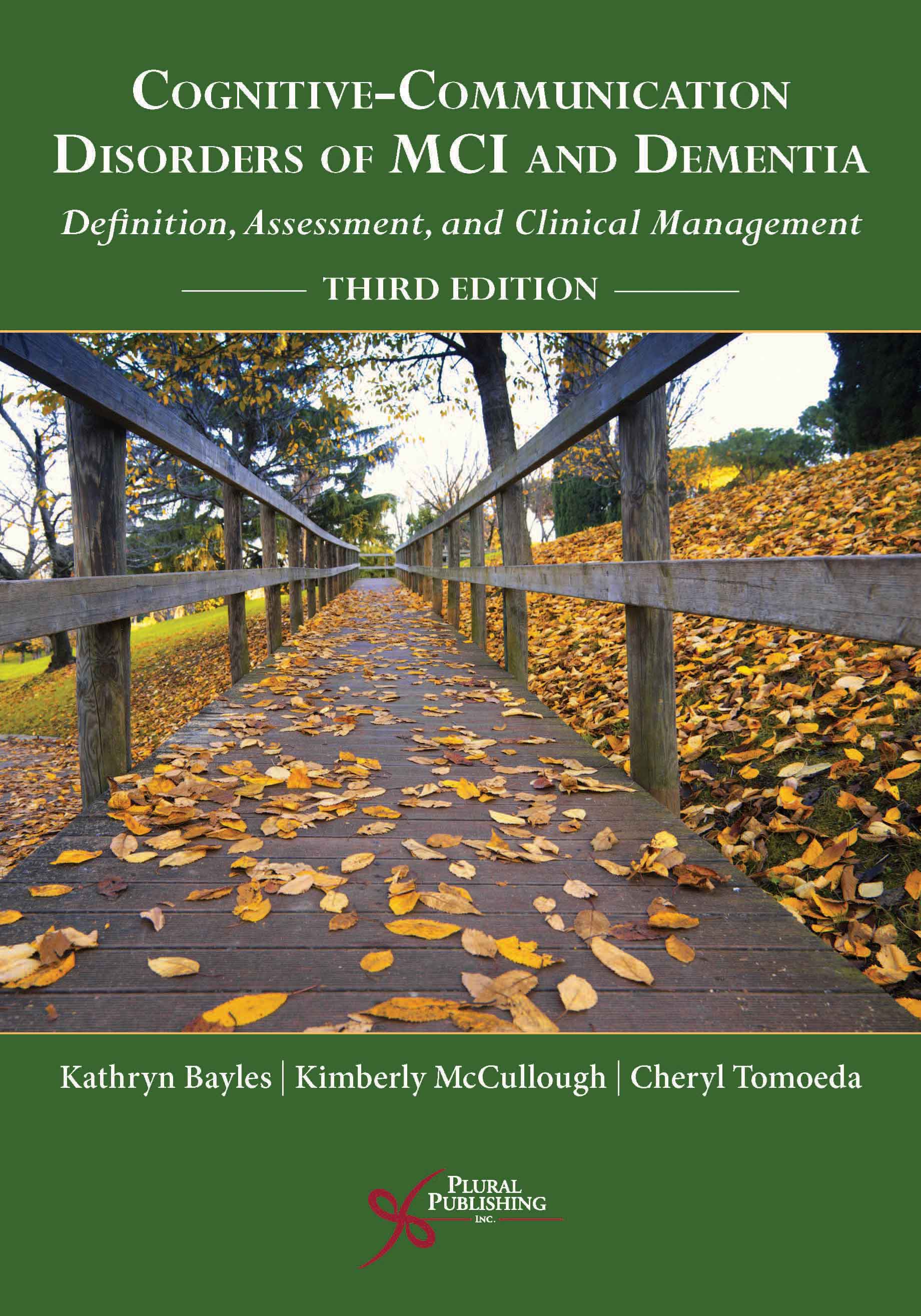
Cognitive-Communication Disorders of MCI and Dementia: Definition, Assessment, and Clinical Management
Third Edition
Kathryn Bayles, Kimberly McCullough, Cheryl K. Tomoeda
Details: 265 pages, B&W, Softcover, 7" x 10"
ISBN13: 978-1-63550-060-8
© 2020 | Available
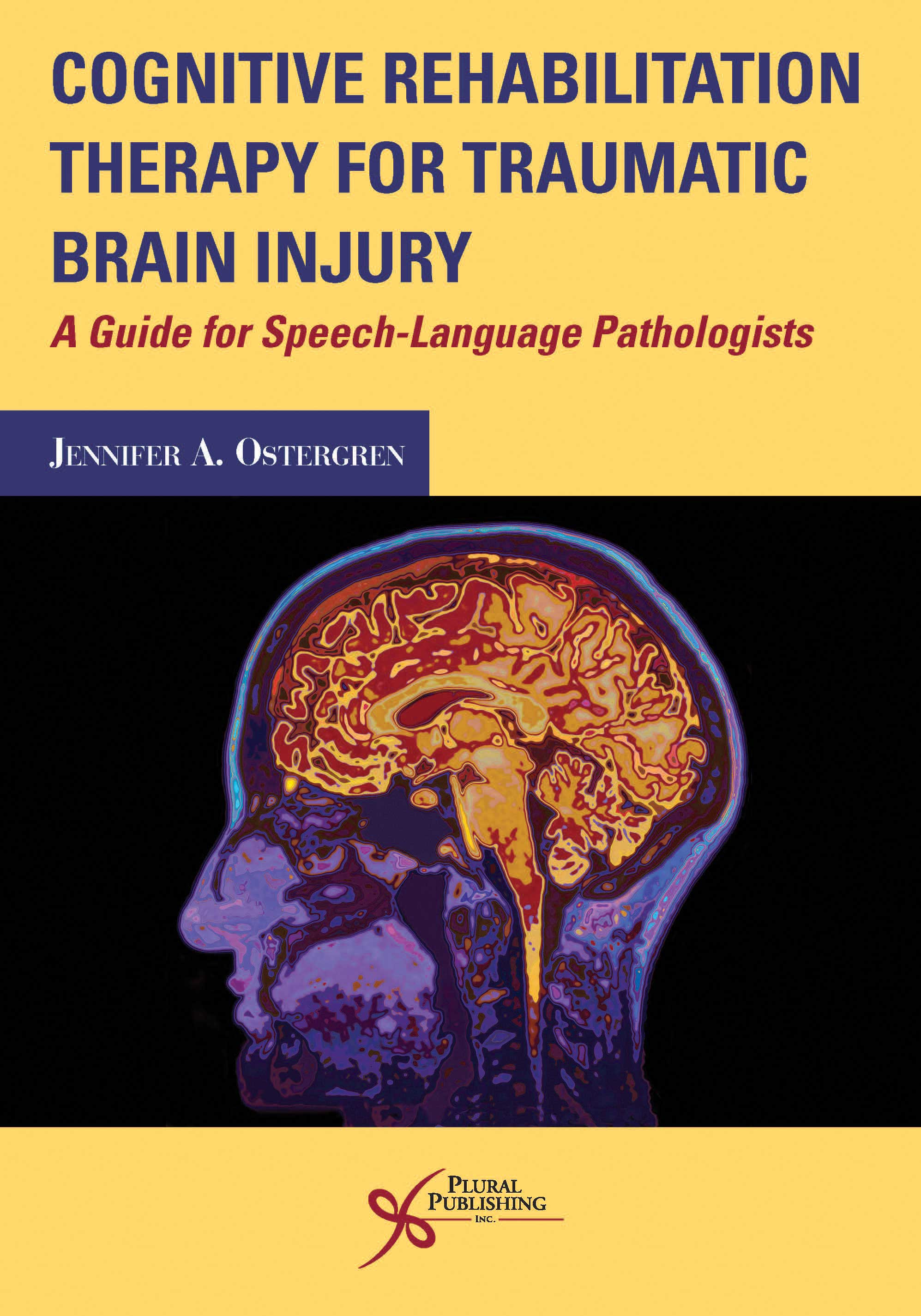
Cognitive Rehabilitation Therapy for Traumatic Brain Injury: A Guide for Speech-Language Pathologists
First Edition
Jennifer A. Ostergren
Details: 321 pages, B&W, Softcover, 7" x 10"
ISBN13: 978-1-59756-789-3
© 2018 | Available
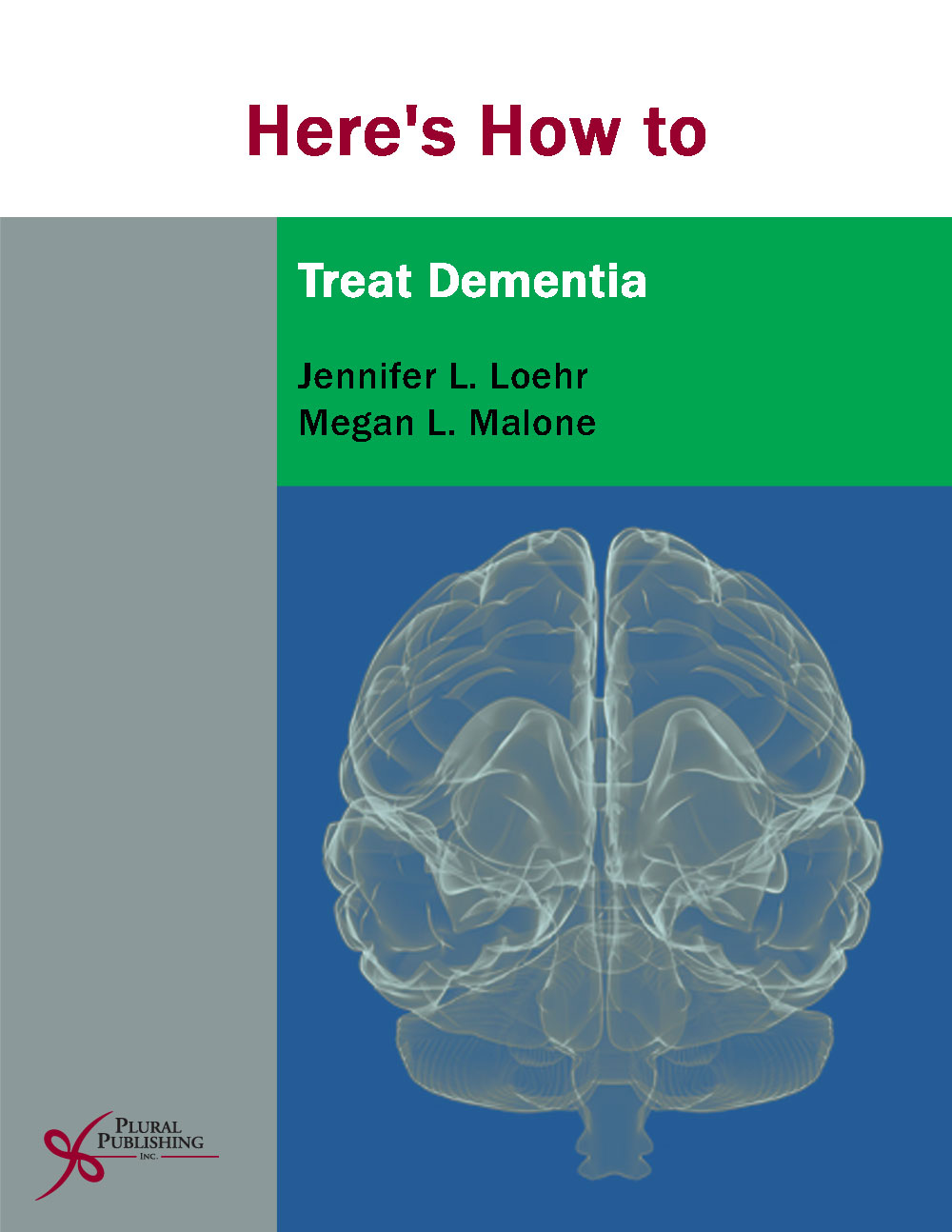
Here's How to Treat Dementia
First Edition
Jennifer L. Loehr, Megan L. Malone
Details: 200 pages, B&W, Softcover, 8.5" x 11"
ISBN13: 978-1-59756-448-9
© 2014 | Available
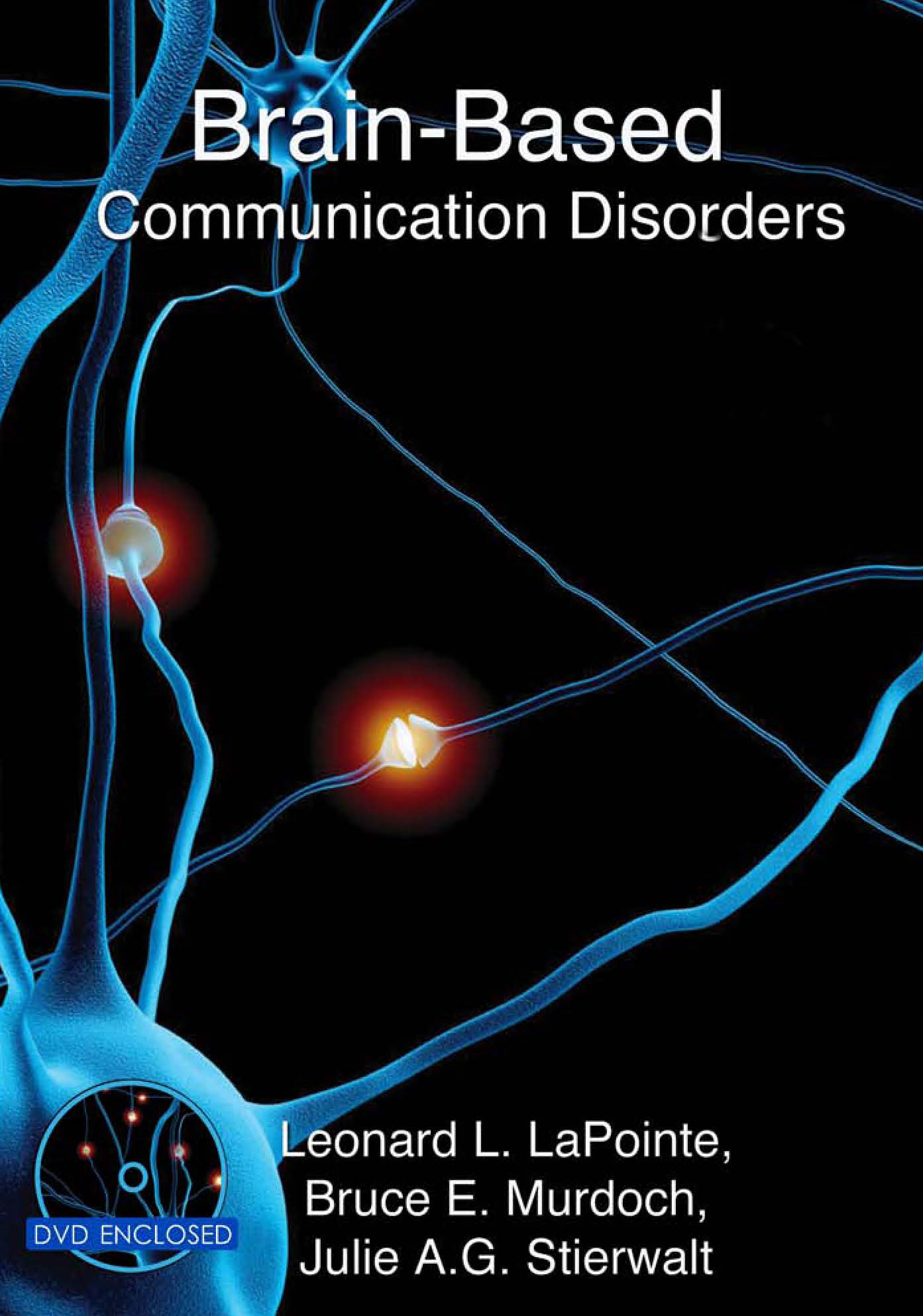
Brain-Based Communication Disorders
First Edition
Leonard L. LaPointe, Bruce E. Murdoch, Julie A. G. Stierwalt
Details: 265 pages, Full Color, eBook
ISBN13: 978-1-59756-704-6
© 2011 | Available

Neurogenic Communication Disorders and the Life Participation Approach: The Social Imperative in Supporting Individuals and Families
First Edition
Audrey L. Holland, Roberta J. Elman
Details: 242 pages, Softcover, B&W, 6" x 9"
ISBN13: 978-1-63550-295-4
© 2021 | Available
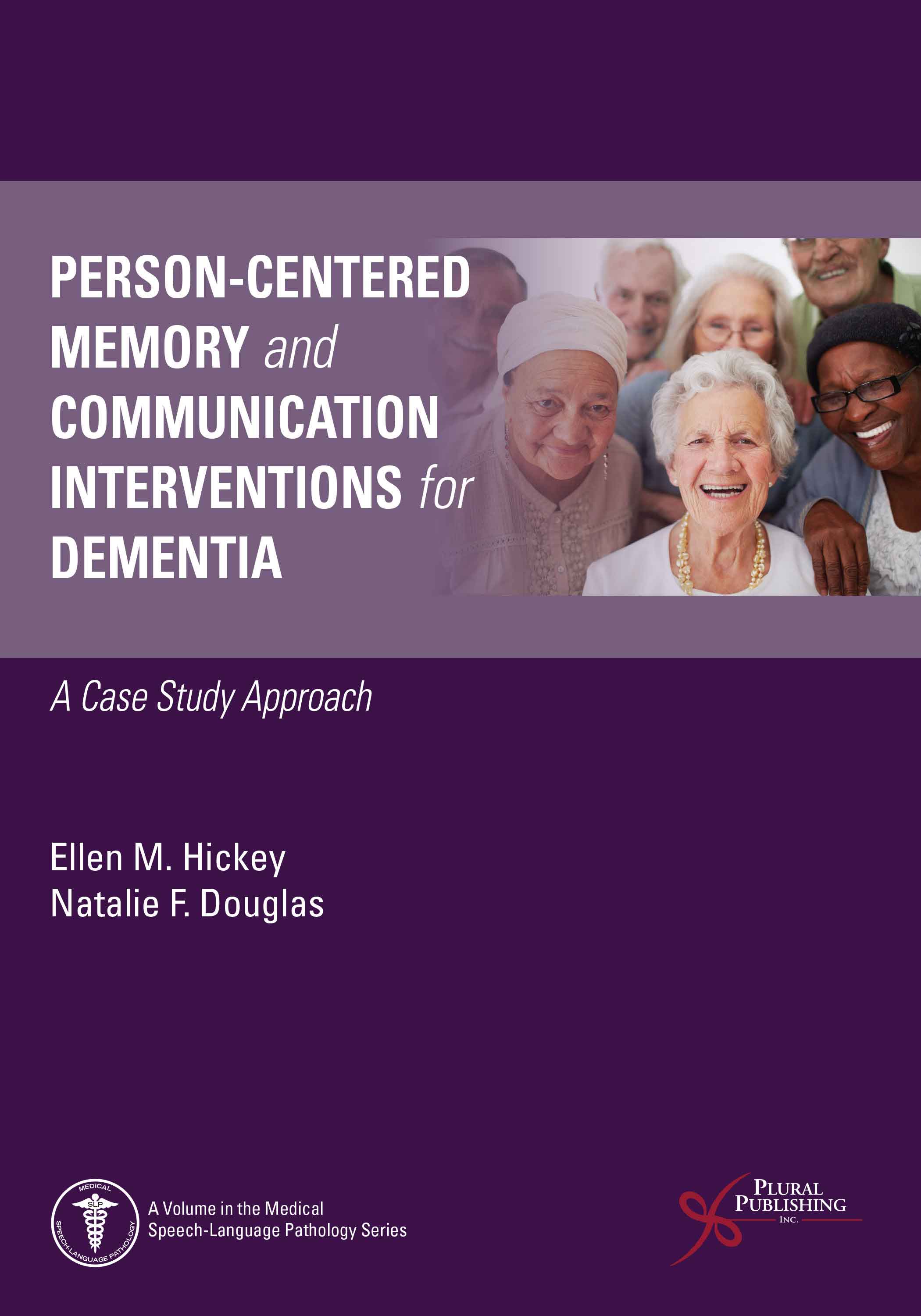
Person-Centered Memory and Communication Interventions for Dementia: A Case Study Approach
First Edition
Ellen M. Hickey, Natalie F. Douglas
Details: 178 pages, B&W, Softcover, 7" x 10"
ISBN13: 978-1-63550-301-2
© 2021 | Available
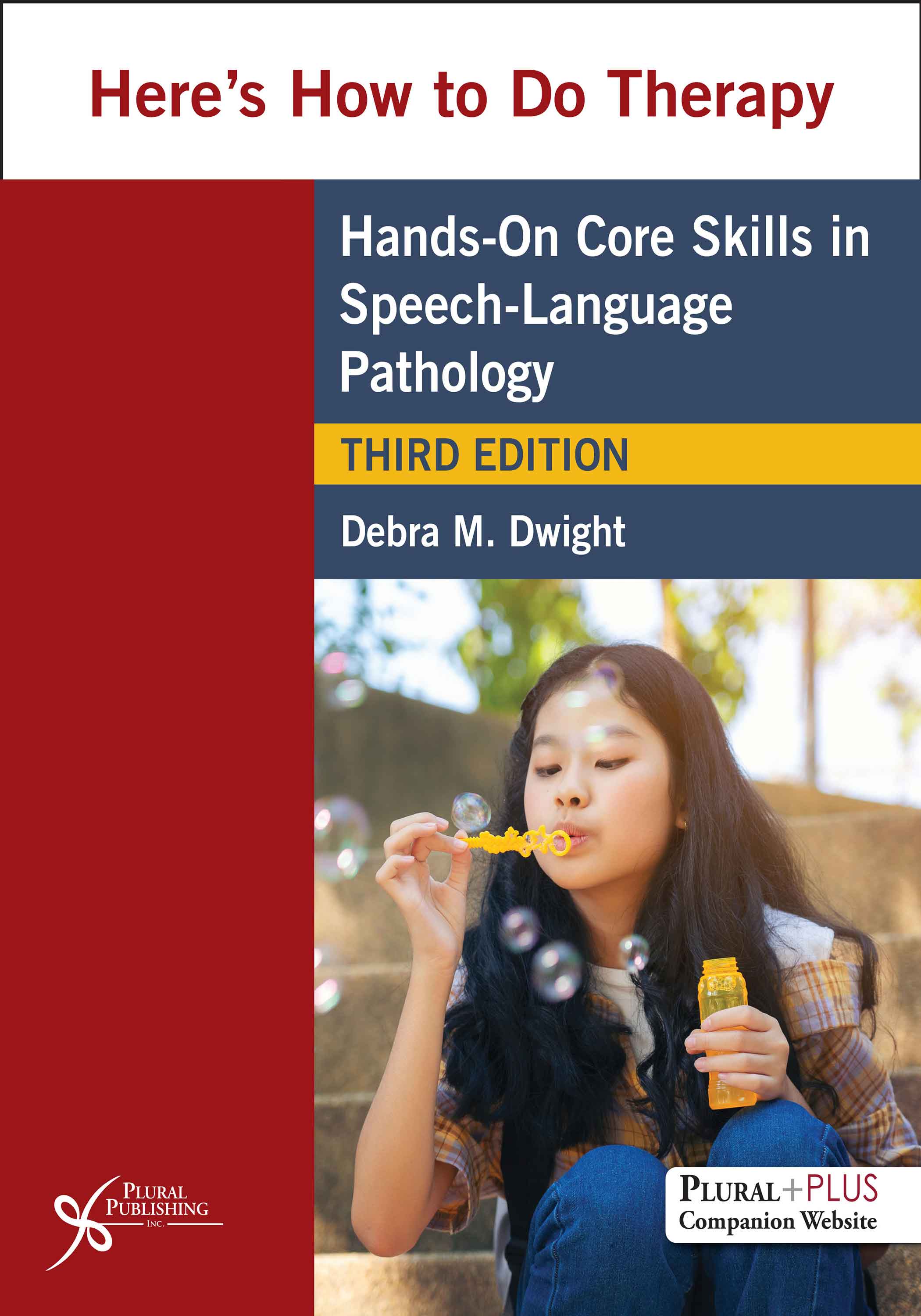
Here's How to Do Therapy: Hands on Core Skills in Speech-Language Pathology
Third Edition
Debra M. Dwight
Details: 460 pages, B&W, Softcover, 8.5" x 11"
ISBN13: 978-1-63550-320-3
© 2022 | Available
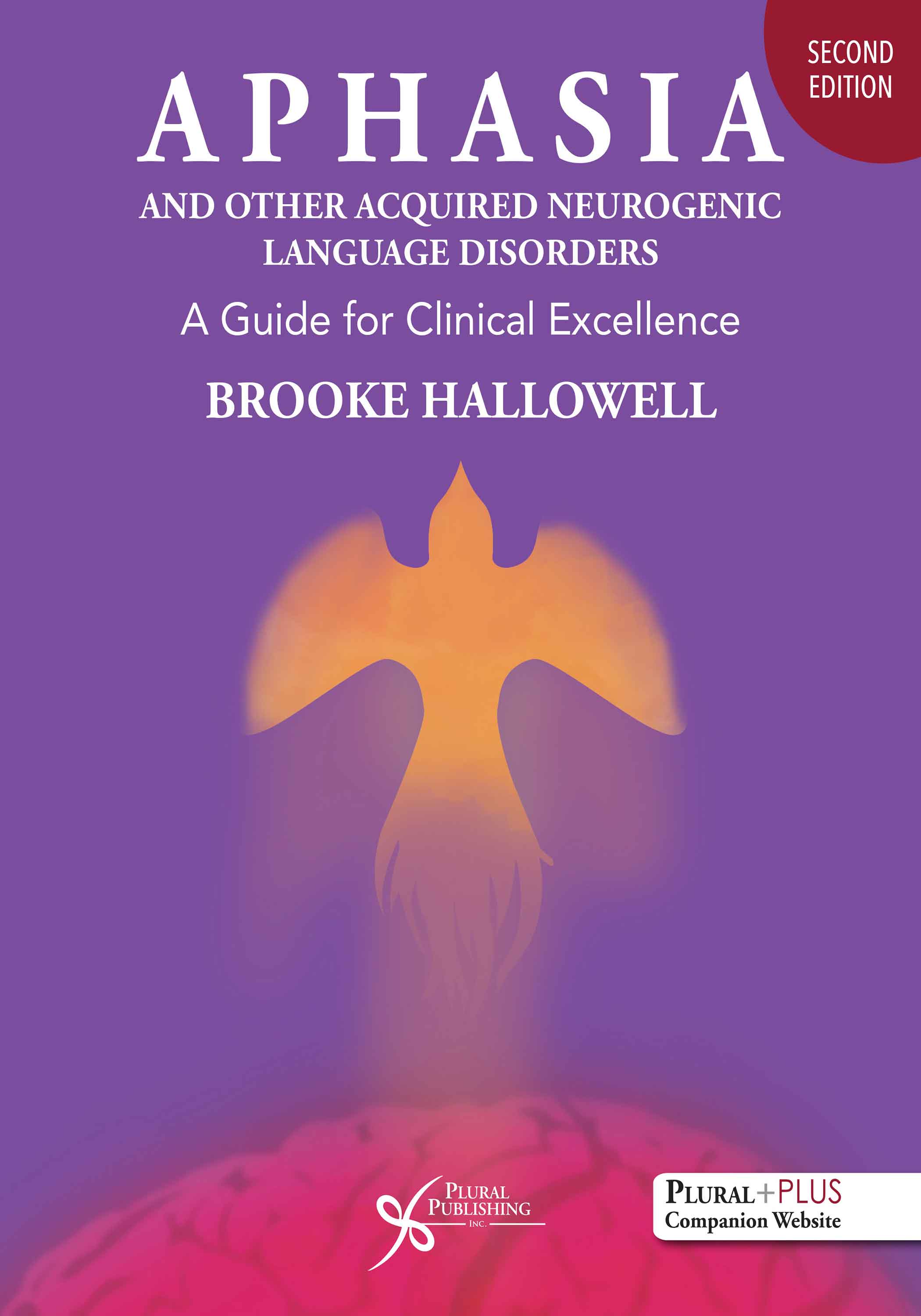
Aphasia and Other Acquired Neurogenic Language Disorders: A Guide for Clinical Excellence
Second Edition
Brooke Hallowell
Details: 629 pages, 2-Color with Full-Color Insert, Softcover, 8.5" x 11"
ISBN13: 978-1-63550-159-9
© 2023 | Available
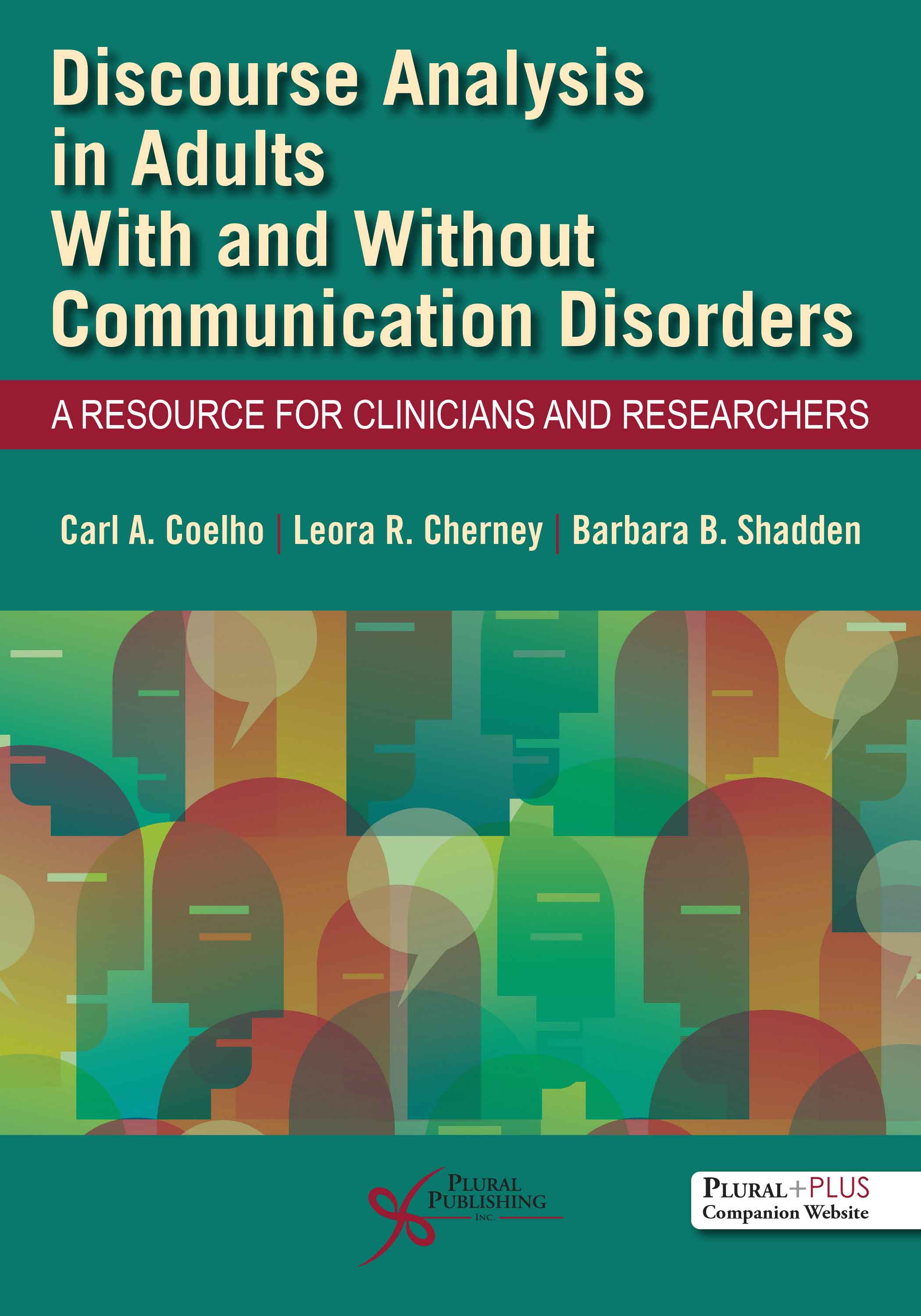
Discourse Analysis in Adults With and Without Communication Disorders: A Resource for Clinicians and Researchers
First Edition
Carl Coelho, Leora R. Cherney, Barbara B. Shadden
Details: 341 pages, B&W, Softcover, 7" x 10"
ISBN13: 978-1-63550-375-3
© 2023 | Available
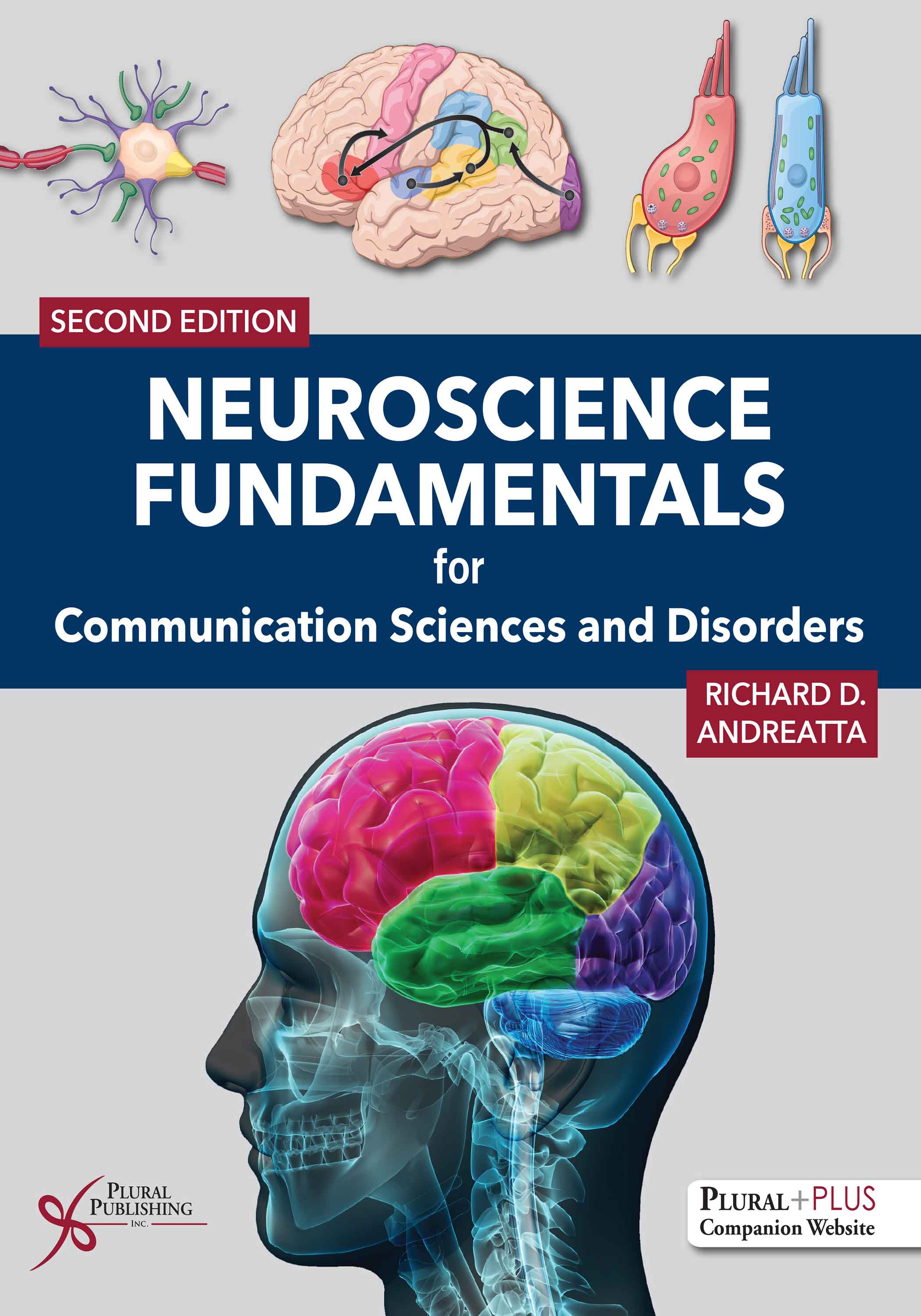
Neuroscience Fundamentals for Communication Sciences and Disorders
Second Edition
Richard D. Andreatta
Details: 802 pages, Full Color, Hardcover, 8.5" x 11"
ISBN13: 978-1-63550-359-3
© 2024 | Available
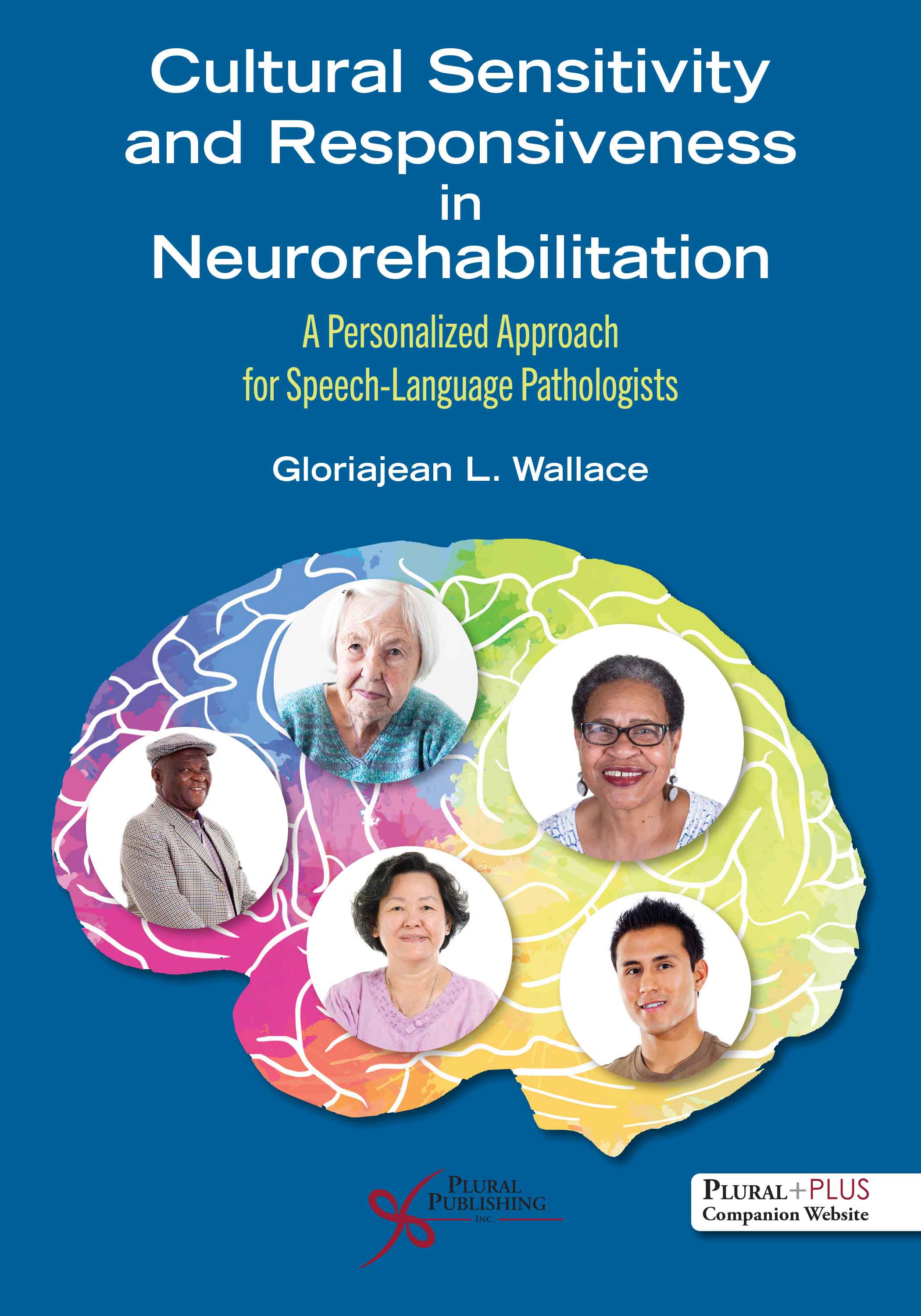
Cultural Sensitivity and Responsiveness in Neurorehabilitation: A Personalized Approach for Speech-Language Pathologists
First Edition
Gloriajean L. Wallace
Details: 853 pages, B&W, Softcover, 7" x 10"
ISBN13: 978-1-63550-032-5
© 2025 | Available
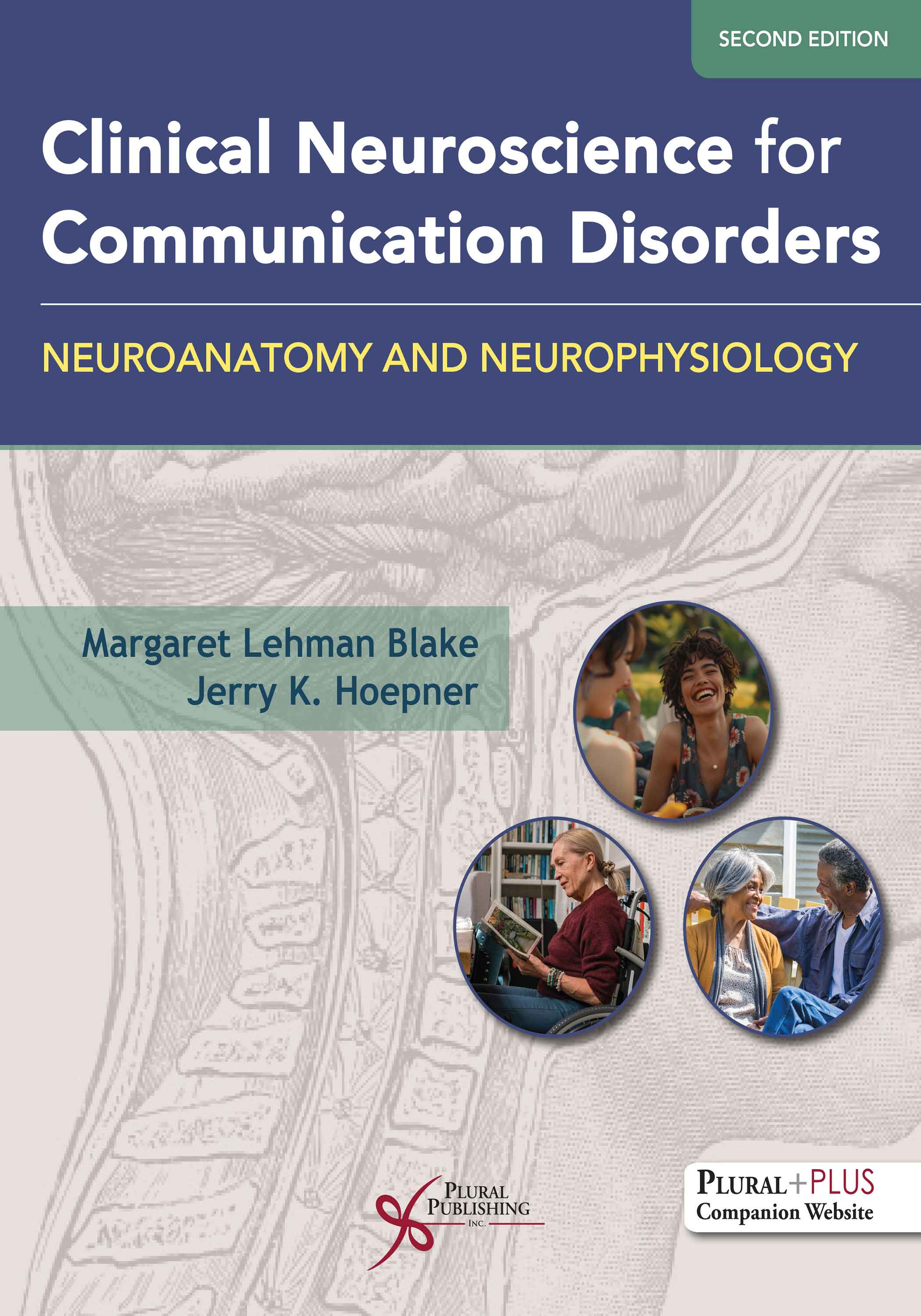
Clinical Neuroscience for Communication Disorders: Neuroanatomy and Neurophysiology
Second Edition
Margaret Lehman Blake, Jerry K. Hoepner
Details: 384 pages, Full Color, Hardcover, 8.5" x 11"
ISBN13: 978-1-63550-781-2
© 2027 | Available

